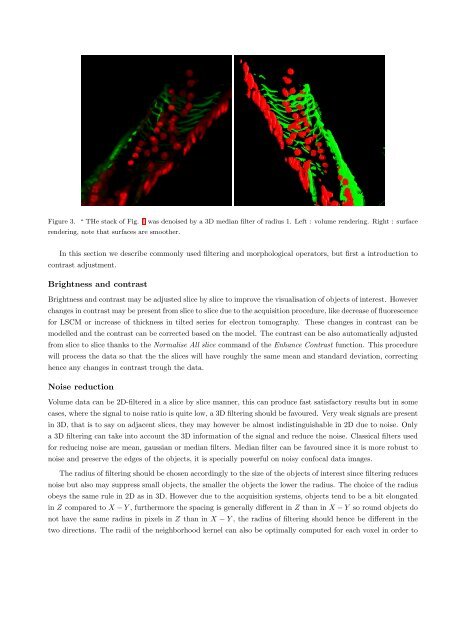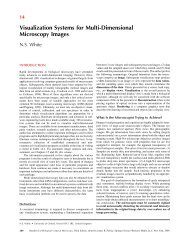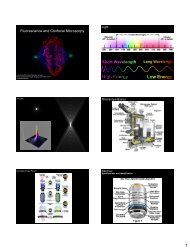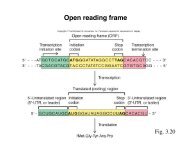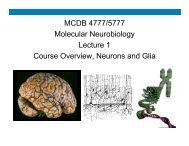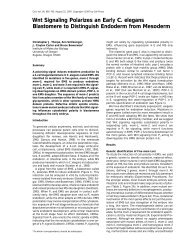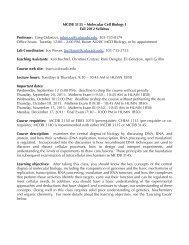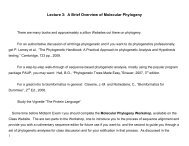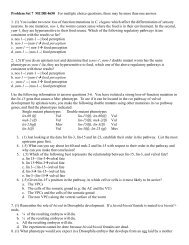3D Processing and Analysis with ImageJ
3D Processing and Analysis with ImageJ
3D Processing and Analysis with ImageJ
Create successful ePaper yourself
Turn your PDF publications into a flip-book with our unique Google optimized e-Paper software.
Figure 3. “ THe stack of Fig. 1 was denoised by a <strong>3D</strong> median filter of radius 1. Left : volume rendering. Right : surface<br />
rendering, note that surfaces are smoother.<br />
In this section we describe commonly used filtering <strong>and</strong> morphological operators, but first a introduction to<br />
contrast adjustment.<br />
Brightness <strong>and</strong> contrast<br />
Brightness <strong>and</strong> contrast may be adjusted slice by slice to improve the visualisation of objects of interest. However<br />
changes in contrast may be present from slice to slice due to the acquisition procedure, like decrease of fluorescence<br />
for LSCM or increase of thickness in tilted series for electron tomography. These changes in contrast can be<br />
modelled <strong>and</strong> the contrast can be corrected based on the model. The contrast can be also automatically adjusted<br />
from slice to slice thanks to the Normalise All slice comm<strong>and</strong> of the Enhance Contrast function. This procedure<br />
will process the data so that the the slices will have roughly the same mean <strong>and</strong> st<strong>and</strong>ard deviation, correcting<br />
hence any changes in contrast trough the data.<br />
Noise reduction<br />
Volume data can be 2D-filtered in a slice by slice manner, this can produce fast satisfactory results but in some<br />
cases, where the signal to noise ratio is quite low, a <strong>3D</strong> filtering should be favoured. Very weak signals are present<br />
in <strong>3D</strong>, that is to say on adjacent slices, they may however be almost indistinguishable in 2D due to noise. Only<br />
a <strong>3D</strong> filtering can take into account the <strong>3D</strong> information of the signal <strong>and</strong> reduce the noise. Classical filters used<br />
for reducing noise are mean, gaussian or median filters. Median filter can be favoured since it is more robust to<br />
noise <strong>and</strong> preserve the edges of the objects, it is specially powerful on noisy confocal data images.<br />
The radius of filtering should be chosen accordingly to the size of the objects of interest since filtering reduces<br />
noise but also may suppress small objects, the smaller the objects the lower the radius. The choice of the radius<br />
obeys the same rule in 2D as in <strong>3D</strong>. However due to the acquisition systems, objects tend to be a bit elongated<br />
in Z compared to X − Y , furthermore the spacing is generally different in Z than in X − Y so round objects do<br />
not have the same radius in pixels in Z than in X − Y , the radius of filtering should hence be different in the<br />
two directions. The radii of the neighborhood kernel can also be optimally computed for each voxel in order to


